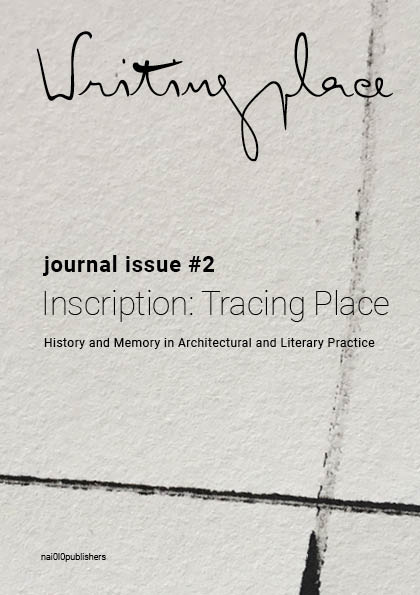Authors
-
Viktorija Bogdanova
-
Danica Spasevska
-
Maja Nikova
Keywords:
Poem-Drawing, Reflective Nostalgia, Personalized History, Transformed Memory
Abstract
In this article, poem-drawing is proposed as an emotive tool to interweave observations of place, the subjective perception of the architect, and imagined spatial interventions. A composite of two artistic instruments, allows the subjective and the objective dimension in architecture to re-establish their dialogue. In this paper, we aim to exhibit how poem-drawing can: 1. bring urban history into presence by verse-image storytelling; 2. discern how emotions (memories, desires, fears, dreams) related to a place build the urban collective memory; 3. encourage a design approach, sensitive towards the site-specific inherent beauty.
Taking the old city core of Ohrid as a case study, we examined its reflection in/through the eyes of three (imaginary) interlocutors: a young pregnant woman in 1944, an eight-year-old girl in 2018 and an old lady in 2084. Through a process of poem-drawing-discussing, we tried to inhabit their personas by writing and drawing our imagined experiences of their storylines. Each cycle of poem-drawings was followed by comparison and evaluation of the written and drawn results according to their relevance for a future spatial intervention. By comparing poem-drawings from three time periods, we aimed to question whether it is possible to reveal which spatial qualities remain absolute, timeless, derived from the specificity of a particular site?
With this experimental process, we aimed to find ways of tracing urban history, and to capture site-specific qualities that are difficult to measure by conventional means. By using our own embodied experience, our imagination, and by discussions on our findings, our investigation brought into play stories of the ancestors and the descendants of the citizens of Ohrid.
Author Biographies
Viktorija Bogdanova
Viktorija Bogdanovais a poet and architect who investigates the poem-drawing as a processual instrument in creative research. She finished her Master studies at ‘Ss. Cyril and Methodius’ University in Skopje in 2014. After her thesis defence she continued working there as an associate assistant in the Housing Design Department (under Prof. Minas Bakalchev). In 2016 she started developing her PhD topic at the Faculty of Architecture, University of Ljubljana: Emotive Immersion Through Poem-Drawing in Spatial Design. She took part in two cycles of CA2RE - Conference of Artistic and Architectural Research, where she presented different fragments of her research through exhibitions of her architectural poem-drawings (September 2017 in Ljubljana, April 2018 in Aarhus). She is an author of two published books of poems and poem-drawings. In both teaching and independent (individual and co-creative) architectural practice, she tries to experiment with parallel and/or entwined writing and drawing as ways towards holistic design approach.
Danica Spasevska
Danica Spasevska is an architect born in Debar, Macedonia. She finished her Master’s degree in 2014 at ‘Ss. Cyril and Methodius’ University, Skopje. She is working in an architecture studio in Skopje as an architect and urban designer. Her independent research and design approach address problems of contemporary city conditions, revitalization of site memories and structures through individual spatial experience and expression.
Maja Nikova
Maja Nikova has a Master’s degree in architecture from ‘Ss. Cyril and Methodius’ University in Skopje, which she completed in 2018. She has participated in several workshops and competitions and has worked as an assistant in the faculty library while conducting research for her Master’s thesis. She is a co-founder of Kalem, a non-governmental organization for architectural workshops and installations in Macedonia. She has an acute love for the fine arts, literature and music. She wants to have conversations that stretch the mind and is developing a passion for doing things that makes the soul dance. She tries to capture through emotional way of understanding the small connections of memory and moments that fulfil life, through drawings and prose and poetry, striving to discern the beauty of living, beauty as harmony of purpose and form.
References
Orwell, G. Nineteen Eight-Four (London: Secker & Warburg, 1949)
Pérez-Gómez, A. Built Upon Love: Architectural Longing After Ethics and Aesthetics (Cambridge, MA: MIT Press, 2006)
Popovski, Z. ‘Ohrid School (of Architecture)’, Arshin, 2 (1996)
Shekutkovska-Dokoska, A. Koncept Mama: A Contemporary Handbook for Pregnancy, Birth-Giving and Beginning of Motherhood (Skopje: self-published, 2018)



